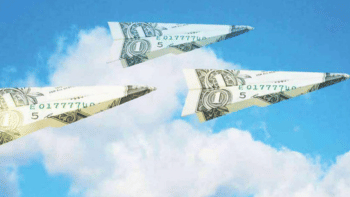Going cashless for a day

In the middle of an ongoing pandemic, the use of cash transactions imposes various risks. I have found it very difficult to switch to completely cashless transactions. I have come across myriads of advertisements in various social media platforms praising the ease of mobile banking, and even though I have used Mobile Financial Services (MFS) from time to time, I never quite thought about going completely cashless. But, a part of me was curious to know how convenient mobile banking is in a country like Bangladesh. To test it out, I decided to carry out all my transactions through MFS for a whole day.
My day started with a morning walk at a nearby park. I did not carry my wallet and left home with only a phone in my hand. On my way back from my walk, I decided to purchase some fresh fruits and vegetables from the street vendors lined up on the roads. I had the mobile banking app downloaded on my phone but I was sceptical about approaching the vendor about it. I did not know whether he would allow me to pay for the products through a digital transaction. Fortunately, the street vendor had an MFS account as well but he seemed unsure about the whole transaction process. Till then, he had been used to cashing out all his money and had carried out a few digital transactions with a customer. But, after some convincing, the vendor allowed me to pay through mobile banking; and in an instant, both our phones received a confirmation message regarding the transaction. The only problem throughout this interaction was the inexperience of the vendor in dealing with customers who want to pay through mobile banking. He was unwilling to use MFS due to his unfamiliarity with the use of such technology on a day-to-day basis.
The next part of my day consisted of preparing for my office commute. Since my office is situated a bit far away from my home, I decided to use a ridesharing service. While I sat in traffic, I decided to work on some of my other chores. Since I have been behind on my bills, I opened my mobile banking app and in just a few steps paid my utility and electricity bills. Although it did not take long to get the hang of bill payment through mobile banking, I had been rather reluctant to learn about it in the first place and would have rather waited in line for hours, even during a pandemic, to pay my bills.
Since throughout the day, I have to make multiple phone calls, I decided to recharge my phone through the mobile banking app as well. I also received an instant cashback with the particular amount I recharged due to an ongoing offer. There was no need to get out of the car and find stores selling recharge cards with the specific amount I needed to recharge my phone. As I reached my office, I was able to quickly pay for my ride because the ridesharing app already had the cashless payment option through the MFS provider that I used. This freed me from the hassle of counting the right bills and handling loose change. But, this transaction would not have been possible if my ridesharing service did not provide the cashless payment option through my particular MFS provider.
Up to that point, going cashless had been a breeze and I wondered why I had been carrying around cash all this time, to begin with. With cash, I always had to make estimations of my daily expenses every single day but with MFS, tracking expenses had not been an issue at all. As midday neared, I started looking for lunch options. I discovered a special discount offer being provided by a restaurant specifically for MFS users and decided to make use of it. Then I came across further offers of discounts for groceries and other necessities only for MFS users and immediately availed the offers.
As my workday came to an end, I decided to use the same ridesharing app but due to heavy traffic in the area, I opted for a rickshaw instead. This is when I faced the first hiccup of the day. As I reached my destination, I came to know that the rickshaw driver did not use the same MFS provider as me. Due to the lack of interoperability between MFS providers, I could not pay the driver. There was no other option but to cash out at this point. I found a nearby store with an agent for the transaction and paid for my ride through cash.
My day of managing finances through mobile banking ended with mainly two hurdles: unfamiliarity and lack of trust of some people towards the use of technology for transactions and the lack of interoperability between different MFS providers. Although these aren't the only hurdles, my day was relatively smooth due to the fact that in urban areas, MFS is used regularly by most people around me.
For smartphone users like me, digital transactions are not much of an issue since transactions through mobile banking apps usually reduce a lot of the extra charges associated with many of the services. For feature phone users, it will add extra charges and hence they might not be willing to use mobile banking for all their day-to-day activities. Furthermore, the charges increase with larger amounts of money transfers which might make users reluctant to switch to MFS. Modifying these charges would lead more people to appreciate the accessibility of mobile banking and take us a step closer towards becoming a cashless society.


 For all latest news, follow The Daily Star's Google News channel.
For all latest news, follow The Daily Star's Google News channel. 



Comments